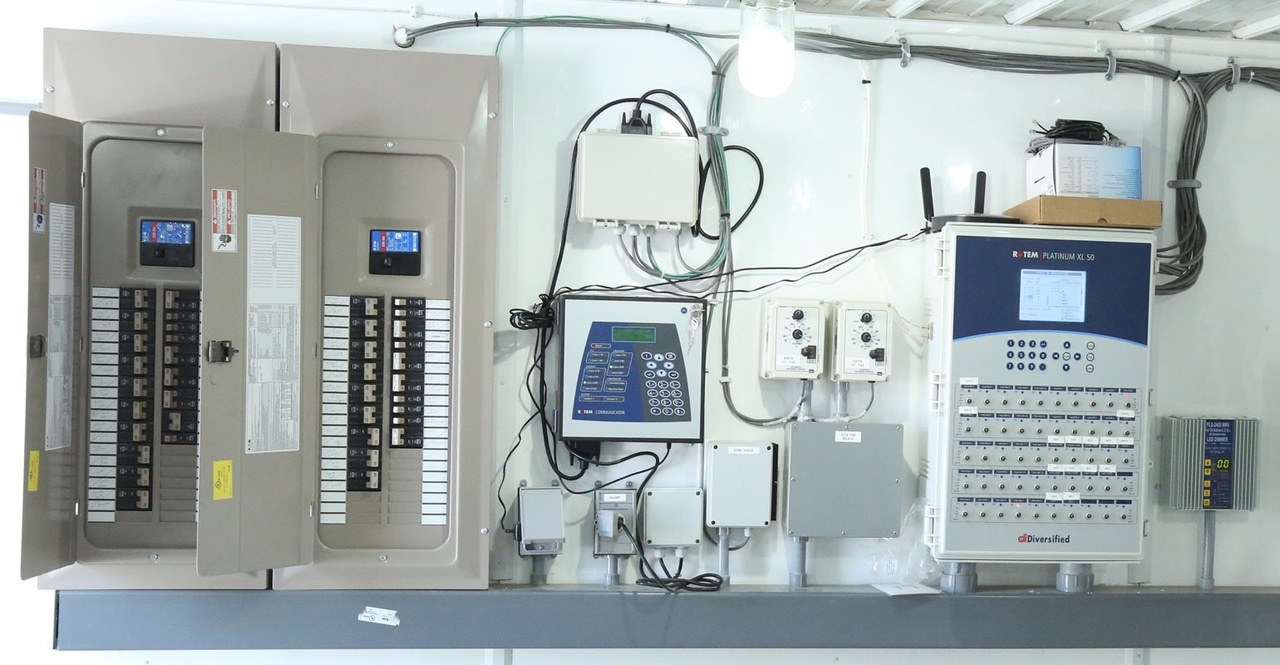Optimize processes with innovative mechanical system optimisation support.
Optimize processes with innovative mechanical system optimisation support.
Blog Article
Specialist Solutions for Electrical System Troubleshooting and Fixings
Effective repairing and repair work of electric systems require a systematic method, leveraging both progressed analysis tools and skilled experience. Typical concerns such as circuit overloads and malfunctioning wiring need prompt interest, yet the intricacies of electric systems can typically obscure the hidden troubles. Safety and security protocols are extremely important, as also minor oversights can bring about substantial risks. Recognizing when to engage a specialist can make all the difference in guaranteeing both safety and security and system integrity. As we explore the essential components of electric troubleshooting, the effects of ignoring these finest practices come to be increasingly noticeable.

Typical Electrical Troubles
While electric systems are created for dependability, they can frequently encounter a variety of usual problems that may interfere with capability and safety. One prevalent issue is circuit overload, which occurs when way too many tools draw power from a single circuit, leading to tripped breakers or blown fuses. technical support for electrical industry. This can not only hinder electrical performance however also position a fire risk
One more regular problem is faulty electrical wiring, typically due to age, wear, or improper setup. Damaged or frayed wires can lead to brief circuits, causing failures or electrical shocks. In addition, loosened connections can create intermittent power loss, creating discouraging and potentially unsafe scenarios.
Ground faults are another issue, especially in wet or damp settings where electrical tools is made use of. These faults can trigger serious safety threats, necessitating instant attention to make certain correct grounding and circuit defense.
Last but not least, flickering lights can show concerns varying from overloaded circuits to defective lighting fixtures. Determining these usual electrical problems is essential for maintaining the stability and safety and security of electric systems, ensuring they run effectively and efficiently. Resolving these issues immediately can prevent much more severe difficulties and improve total system reliability.
Diagnostic Devices and Techniques
Using accurate analysis tools and techniques is essential for properly identifying and dealing with electric system problems. Numerous tools facilitate specific assessments, varying from simple multimeters to advanced oscilloscopes - technical support for electrical industry. Multimeters are essential for measuring voltage, current, and resistance, enabling specialists to swiftly pinpoint faulty parts or links
Clamp meters are especially valuable for gauging present without interrupting the circuit, boosting safety during diagnostics. For even more complicated troubleshooting, oscilloscopes enable the visualization of electric signals with time, supplying understandings right into waveform abnormalities that might suggest underlying problems.
In addition to these devices, infrared thermography is invaluable for discovering overheating parts, which can indicate approaching failures. Insulation resistance testers further help in recognizing compromised insulation, vital for stopping electrical risks.
Strategies such as visual examinations, continuity tests, and circuit mapping are additionally important to an efficient analysis procedure. By combining these tools and techniques, specialists can create an extensive understanding of electrical systems, ensuring accurate medical diagnoses and efficient repair services. Inevitably, leveraging the right diagnostic resources not only enhances fixing effectiveness but likewise contributes to the longevity and security of electric setups.
Step-by-Step Troubleshooting Overview

Following, utilize analysis tools such as multimeters and circuit testers to look for connection, voltage, and existing circulation in the circuit. Start at the source of power, verifying that it is functional, then map the circuit action by action, checking each component in the i loved this process. Document your findings to keep clearness throughout the process.
Once you have actually determined the faulty component, isolate it from the circuit. Execute required fixings or substitutes, making certain that all wiring and links are safe. After dealing with the issue, recheck the whole system to confirm that it runs appropriately.
Safety Precautions Throughout Repairs
Guaranteeing security throughout electric repair services is vital to avoid crashes and injuries. Before starting any work, it is important to shut off the power supply at the breaker and confirm that the circuit is de-energized making use of a trusted voltage tester. Personal protective tools (PPE), consisting of shielded handwear covers and safety goggles, must be put on to mitigate the threat of electric shock and eye injuries.
Additionally, keeping a clutter-free work space is crucial. Make sure devices are in great condition and ideal for the tasks available. Utilizing devices with shielded takes care of can further enhance safety and security. It is also crucial to stay clear of dealing with electrical systems in damp or moist problems, as dampness substantially raises the threat of electric shock.
Protected loosened garments and tie back lengthy hair to avoid any see it here entanglement with electric parts. Acquaint yourself with the certain electric codes and laws appropriate to your location to ensure conformity and security during the repair service process.
When to Call an Expert
While security preventative measures are important for any type of electric fixing, there are scenarios where the complexity or extent of the work demands the competence of a professional electrician. Home owners need to be specifically mindful when managing issues that include circuit breakers, electric panels, or the major power supply. Any indicators of electrical fires, such as burnt smells or flickering lights, warrant immediate specialist interest.
In addition, if you encounter consistent tripping of breaker or regular electric rises, these might suggest underlying troubles that require specialized diagnostic tools and understanding. Projects that require comprehensive rewiring, setup of brand-new circuits, or connections to high-voltage systems need to always be delegated accredited electricians, as improper handling can cause extreme dangers.
Furthermore, regulatory conformity is important in electric work. Experts are familiar with regional codes and policies, ensuring that all repair work meet safety and security standards.
Verdict
In verdict, effective troubleshooting and repair service of electric systems call for an organized strategy, leveraging sophisticated analysis devices and adherence to safety precautions. By recognizing typical electric troubles and using a structured troubleshooting overview, several problems can be fixed efficiently.
Report this page